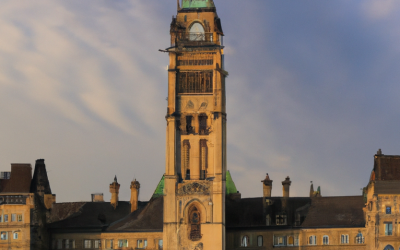The recent election debates showed just how much our federal political leaders buy the nonsensical claim that there is a “fiscal imbalance” between Ottawa and the provincial capitals. “They’re starving for money,” said NDP leader Jack Layton, referring to the provinces’ health care needs and municipal governments’ need for everything else. Following Layton’s lead, the other party heads fell over themselves to prove how generous they could be to other governments.
Let’s skip past Layton’s inappropriate use of the word “starving,” which, as most of our mothers used to tell us, should be reserved for actual, unfortunate children in Africa. It should not be applied to Canada’s cities and towns. Most of them are solidly stuck in the 1970s and far behind U.S. and British cities when it comes to sensible, taxpayer-friendly approaches such as privatization, contracting out and competition in general.
Nor should it be applied to provincial governments unwilling to challenge the status quo on health care — that is, delivered via monopolistic government unions in government-run institutions.
But despite that reality, the provinces in particular are quite adept at pretending they are Tiny Tim fiscal cripples. Witness their regular claim that Ottawa once provided 50% of all health care funding and now provides only 16%.
Voters should be skeptical about provincial propaganda, and here’s why: Before 1977, Ottawa shared costs 50-50 on a number of items, but excluded others, such as mental hospitals, home care and administration costs. The result was that the federal government never actually paid more than 41% of health care costs — and even that level hasn’t been seen since the 1960s.
In addition, the premiers arrive at their 16% figure by contrasting the amount Ottawa transfers to the provinces with the amount they spend in total on health care and all other social programs. That’s politically convenient, if one wants to make the federal government look cheap; it’s also dishonest.
Besides, provincial leaders now have convenient amnesia about the fact that Ottawa handed over significant tax room to the provinces 27 years ago. It would be ancient history, except that the 1977 tax transfer is now worth $17-billion annually to the provinces and territories.
On top of that, Ottawa sends transfer payments to all jurisdictions, and equalization payments to everyone but Alberta and Ontario. (Note to Ontario and Alberta voters: stop asking your provincial leaders to demand more transfers from Ottawa; it’s counter-productive as more of your federal tax dollars leave your provinces than ever come back because of the structure of equalization and transfer payments.)
So how much does Ottawa hand to the provinces and territories in total? Add up the value of the cash, tax transfer and equalization and this year the Department of Finance figures the tax points and cash are worth $51.6-billion.
How much of that goes to health? Finance bureaucrats — who are not running for political office — note that given the portion of provincial budgets spent on health care, it’s reasonable to argue that the provinces spend the same portion of transfer payments and equalization on health. That means they use $28-billion transferred from Ottawa for health, or about 35% of their $78-billion health care spending.
But wait — add in the $6-billion spent by the federal government directly on health (natives, veterans and research) and arguably, 40% of total government spending on health care in Canada is financed by the federal government. That’s a tad more than the 16% figure you’ll hear from the premiers when they get together this summer to practise their tale-of-woe routine.
Provincial statistical spin-doctoring aside, in a perfect world, Ottawa would scrap transfer and equalization payments and — if provinces could actually prove their case on the supposed fiscal imbalance — just hand over more tax room and let provincial budgets sink or swim.
That was in fact the intent of our country’s founding fathers; they only grudgingly transferred money to the provinces because they were concerned the provinces might otherwise impose tariffs on each other’s goods. The Dominion government also didn’t want the provinces to start taxing income.
So in lieu of provincial income taxes or tariffs, Ottawa agreed to transfer money to each province at a rate of 80 cents per person. This was to be the “full and final settlement,” wrote one tax historian. Of course, transfer payments have been renegotiated ad nauseam, and upward, ever since; worse, our political leaders unwisely guaranteed some form of equalization in the 1982 constitution, though they mercifully left the structure undefined.
A significant problem with transfers of taxpayer cash between governments is that most voters are never sure which level of government is doing the taxing and spending, and for what purpose. That’s a recipe for unaccountability because it allows politicians to blame others for their hospital lineups or their new health care taxes.
If anything, federal politicians in particular should ratchet back transfer payments, not send more to left-wing city councils or provincial governments of every partisan stripe who deliberately engage in the creation of false statistics while they delay actual health care reform.
One last thought about those supposedly malnourished provinces: After Confederation, the provinces were the third-place revenue collectors. That lasted until just after the Second World War, when they overtook the cities. Now, provinces and territories collect more own-source revenue than any other level of government — including the one in Ottawa.



